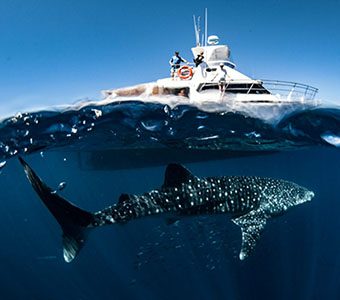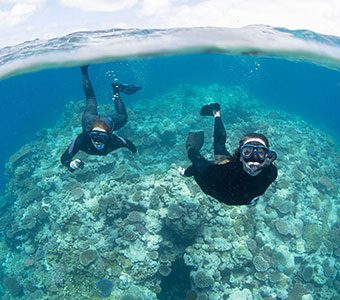What do we know about whale sharks? Very little. We know whale sharks are the largest fish in the sea, they eat plankton and travel the world. But little else. Marine scientists and tour operators are working to change this, with new information and discoveries emerging constantly about Rhincodon typus. Here are five of the most amazing new facts about Whale Sharks researched by wildlife tour guide Janine Duffy, of Echidna Walkabout Tours.
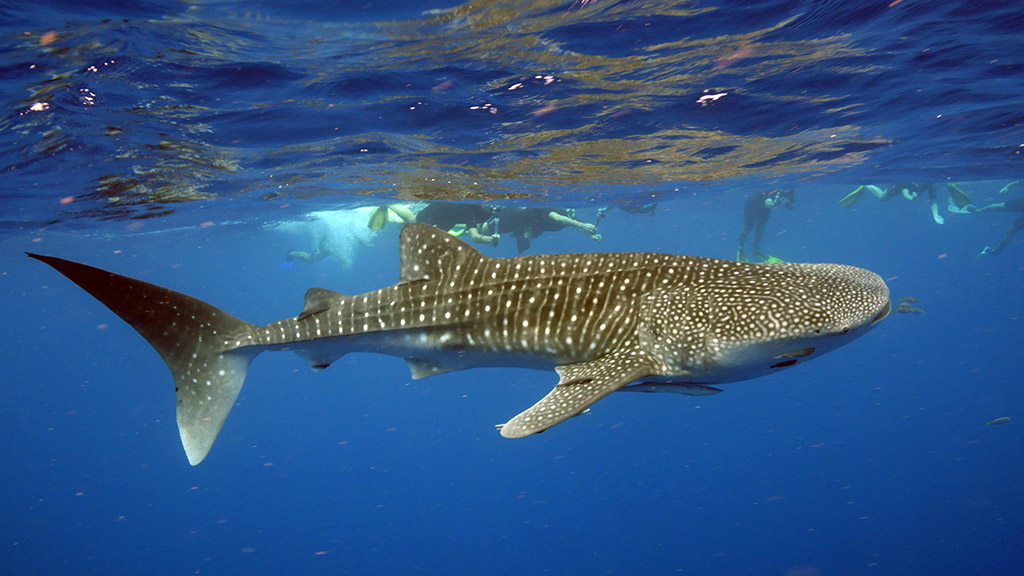
1. Whale Sharks recover quickly from wounds and may even regrow parts of their bodies.
Whale sharks spend a lot of time at the surface, warming themselves after feeding in deeper waters, and occasionally get hit by boats. This can result in terrible injuries. If you see whale shark with a cut, abrasion or amputation, will it recover?
It seems it will, and quite fast. In an extraordinary new study, researchers studied injured whale sharks in the Maldives and near Djibouti. Both natural and human-caused injuries were studied. Large cuts were 90 percent closed in 35 days, and over time most scars disappeared completely. The original spots and stripes even returned.
Regrowing amputated limbs is much rarer in large animals, but even that was partially achieved by one whale shark in the study. He had lost the tip of his dorsal fin, but it regenerated over five years.
Though whale sharks are resilient and heal well, the largest number of whale sharks in this study were injured by humans and their boats. This reinforces the importance of seeing Whale Sharks in a country where they are protected from a boat strike. Australian regulations on Whale Shark encounters are strict, with Ningaloo operators such as Exmouth Dive & Whale Sharks some of the best in the industry.
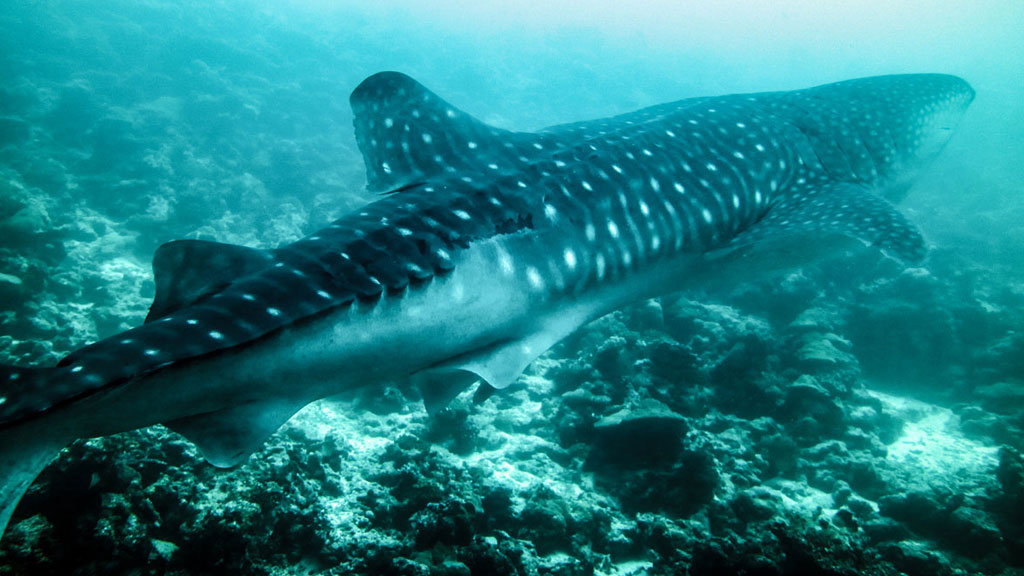
2. Big ships are hurting them, but Western Australia’s tour operators are helping
Nearly one-sixth of the Whale Sharks that visit Ningaloo Reef carry serious injuries, most of them from collisions with large ships, according to a recent study by the University of Western Australia.
The new study compiled photographs and information collected from Ningaloo Reef tourism operators and research groups, to analyze the injuries to the sharks. 39 percent of whale sharks had scars, but most of those were minor nicks and abrasions. Sadly, though, injuries increased over the duration of the study. It is hoped that the findings of the study will lead to better practices by international shipping companies.
3. Globally endangered, but increasing at Ningaloo Reef
The IUCN lists Whale Sharks as Endangered, with a decreasing population. Major threats to whale sharks are fishing (particularly for shark fin), fisheries bycatch and shipping. Marine pollution, including oil spills, and inappropriate and unregulated tourism can also be a local threat.
But in Western Australia, the whale shark numbers at Ningaloo Reef have increased, bucking the trend worldwide. At the fifth International Whale Shark Conference in 2019 experts praised the management of the industry here.
Dr. Brad Norman said effective management of whale shark tourism in the region was integral in keeping populations healthy.

4. Male Whale Sharks grow fast when young, females grow bigger but more slowly.
Research at Ningaloo Reef found that male whale sharks grow rapidly when young, before their growth rate slows down as they approach 8.5 to 9m in length. Larger males do occur but are very, very old.
The drive to grow fast might be the reason why most of the whale sharks seen by people worldwide are male. Predictable sources of plankton food occur closer to the coast, and the water is warmer which means less energy needed to grow. Females can stay further out in the open ocean.
Female whale sharks grow more slowly throughout life, growing to around 14 metres, although very large individuals, up to 18 metres long, have also been recorded, and are all females.
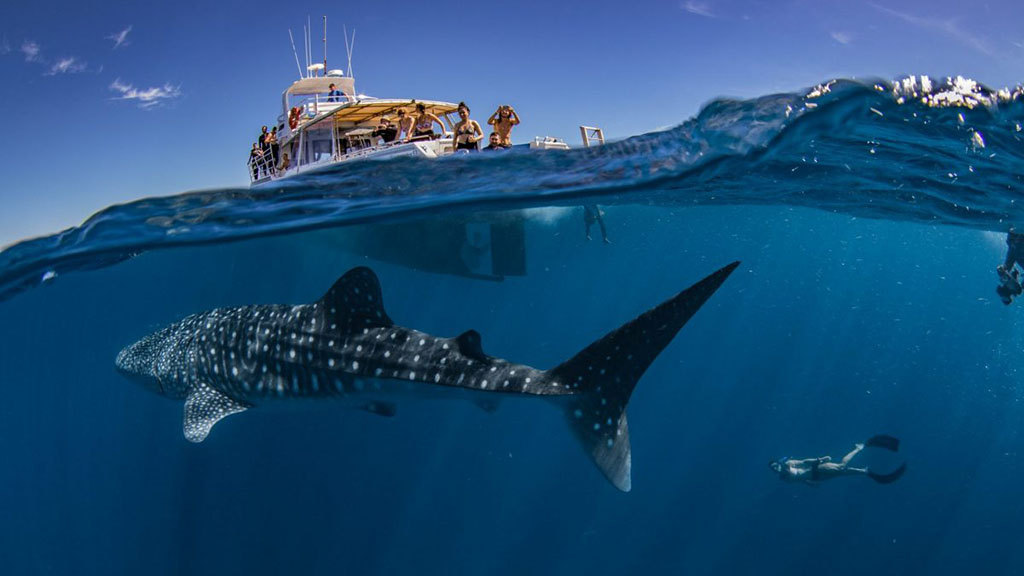
5. Whale Sharks give birth to live young, 300 at a time, but almost nothing is known about their breeding.
Everything we know about whale shark breeding has come from one pregnant female who was caught off in Taiwan. She had 304 babies inside her, all at different stages of development. 29 of them had the same father – which suggests that a female mates and stores sperm, and then fertilizes the eggs when she is ready.
Mating has only been seen and recorded three times – once, recently, by a pilot working for tour boats at Ningaloo Reef. The pilot, Tiffany Klein, reported seeing a male shark acting erratically, who then approached a juvenile female, turned upside down and attempted to mate with her. She shook him off.
No one knows where whale sharks breed. Many females with distended bellies have been seen around the Galapagos Islands, but research so far has not been able to show that they are pregnant.
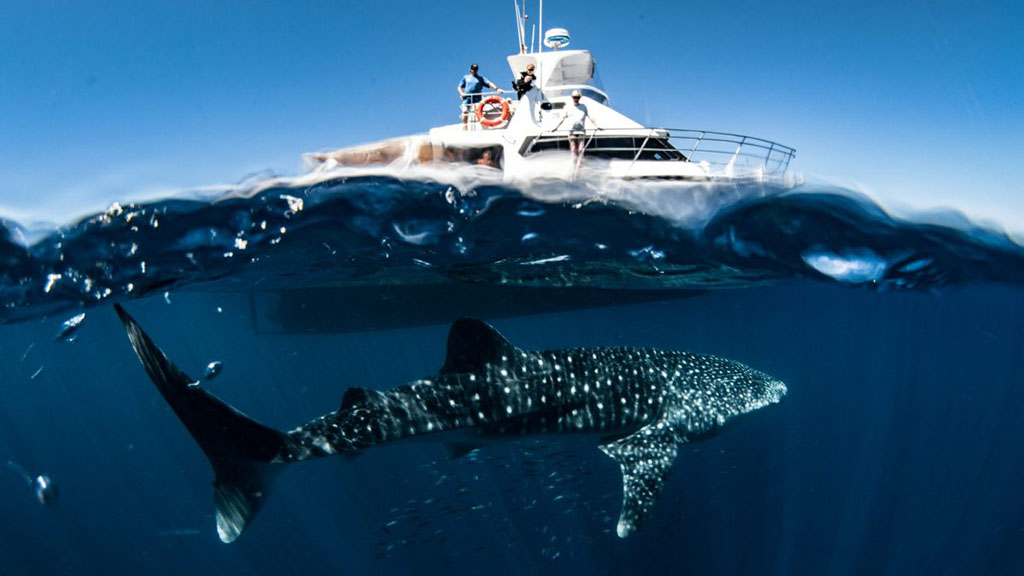
Is tourism good for whale sharks?
In Western Australia, the answer seems to be yes. Visiting whale sharks with licensed tour operators means that important data is collected that contributes to scientific research, and the sharks’ needs are paramount. A recent study by the University of Western Australia found that there is no evidence of long-term impacts of tourism on the whale sharks at Ningaloo. Read other facts about whale sharks here.
NOTES & REFERENCES:
Freya Womersley, James Hancock, Cameron T Perry, David Rowat, Wound-healing capabilities of whale sharks (Rhincodon typus) and implications for conservation management, Conservation Physiology, Volume 9, Issue 1, 2021, coaa120.
Lester, E., Meekan, M. G., Barnes, P., Raudino, H., Rob, D., Waples, K., & Speed, C. W. (2020): Multi-year patterns in scarring, survival and residency of whale sharks in Ningaloo Marine Park, Western Australia. Marine Ecology Progress Series, 634, 115-126.
Meekan Mark G., Taylor Brett M., Lester Emily, Ferreira Luciana C., Sequeira Ana M. M., Dove Alistair D. M., Birt Matthew J., Aspinall Alex, Brooks Kim, Thums Michele: Asymptotic Growth of Whale Sharks Suggests Sex-Specific Life-History Strategies, Frontiers in Marine Science VOLUME 7, 2020, PAGES 774
Lester, Emily; Speed, Conrad; Rob, Dani; Barnes, Peter; Waples, Kelly; Raudino, Holly: Using an Electronic Monitoring System and Photo Identification to Understand Effects of Tourism Encounters on Whale Sharks in Ningaloo Marine Park, Tourism in Marine Environments, Volume 14, Number 3, 2019, pp. 121-131(11)

